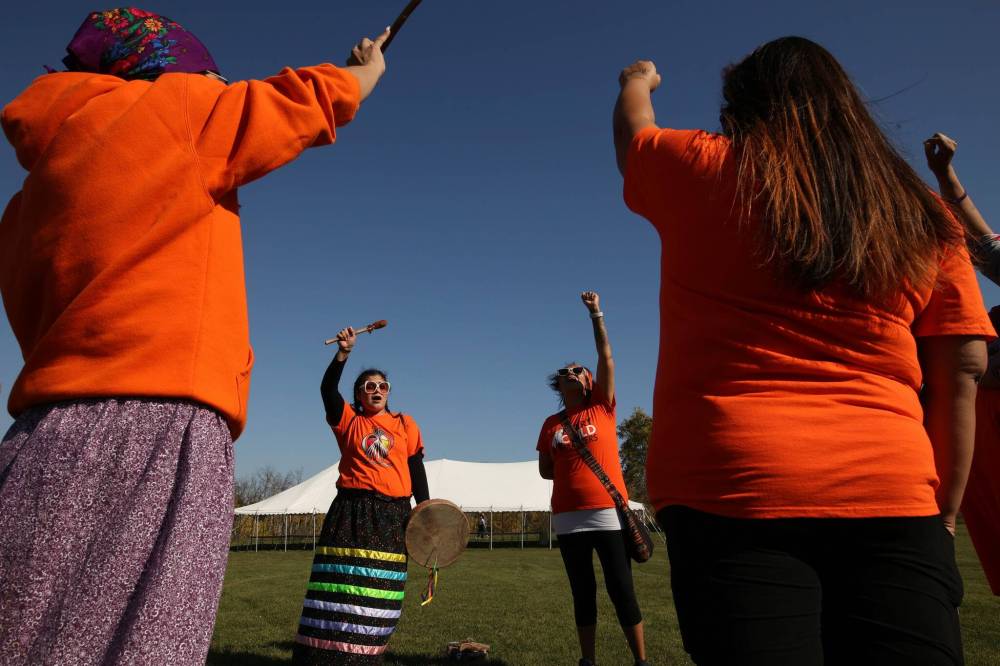Tipi raising is a T&R Week tradition
Advertisement
Read this article for free:
or
Already have an account? Log in here »
We need your support!
Local journalism needs your support!
As we navigate through unprecedented times, our journalists are working harder than ever to bring you the latest local updates to keep you safe and informed.
Now, more than ever, we need your support.
Starting at $15.99 plus taxes every four weeks you can access your Brandon Sun online and full access to all content as it appears on our website.
Subscribe Nowor call circulation directly at (204) 727-0527.
Your pledge helps to ensure we provide the news that matters most to your community!
To continue reading, please subscribe:
Add Brandon Sun access to your Winnipeg Free Press subscription for only
$1 for the first 4 weeks*
*$1 will be added to your next bill. After your 4 weeks access is complete your rate will increase by $4.99 a X percent off the regular rate.
Read unlimited articles for free today:
or
Already have an account? Log in here »
The six 20-foot-tall tipis are hard to miss as you drive up to the Riverbank Discovery Centre.
They were raised Monday afternoon by 100 volunteers pulling ropes and steadying the poles while bucking a strong prairie wind against a bright blue sky.
Signing up to help out has become a tradition, said Brandon City Coun. Jason Splett as he waited for instructions about where to place one of the 15 poles for his group’s tipi.

Students and instructors in the Assiniboine College social service worker program work on setting up a tipi during the Tipi Raisings and Teachings event at the Brandon Riverbank Discovery Centre on Monday as part of Brandon's Truth and Reconciliation Week 2025. (Photos by Tim Smith/The Brandon Sun)
“Raising the tipis signals the start of Truth and Reconciliation Week, kind of like when they light the torch for the Olympics. That’s what this reminds me of,” said Splett (Ward 8).
“I was here last year and once the tipi is up, you get a real sense of accomplishment working together,” he said, motioning to the other volunteers in their orange shirts.
Bouncing her 13-month-old daughter was Michelle Lemay. She had just helped hold down the canvas once all the poles were in place.
“I volunteer every year, except last year because of this little one. I had my hands full,” Lemay said, smiling at her baby.
“But I just love this experience of seeing all different kinds of people here and working together. It’s what community’s all about,” she said.
“It’s good for family and good to be outside. There’s so much knowledge to be shared.”
Knowledge keeper Deborah Tacan walked the volunteers through the process of how to set up a tipi and the significance of the 13 poles on the inside as well as the last two, called the control flaps, for ventilation.
“We start with the three main poles that represent obedience, respect and humility,” Tacan said.
“Humility is about realizing our connection to everything, that we’re part of creation. Our teachings come from natural laws, that’s how our culture is built,” she said.
“We have the 13 poles like there are 13 full moons in a year, and that’s why we do full-moon ceremonies — everything is connected.”

The work crew sets up a tipi at the Discovery Centre on Monday. (Tim Smith/The Brandon Sun)
Tacan, born in The Pas, is a ’60s Scoop survivor. When she was almost 11 years old, she and her six brothers were taken and adopted across Canada and the United States. They were never brought back together as a family when they were children, but found each other again as adults.
The ’60s Scoop is part of Canada’s colonial legacy and involved the removal of Indigenous children from their parents, families, communities and cultures.
Tacan said she shares her history and knowledge because she believes people want to learn more about Indigenous culture, stories like her own and of residential school survivors.
“I can get really emotional because when you think about why we’re together today and this week is because we want to connect with each other. We want to reconcile with ourselves, to heal and build relationships,” Tacan said.
“But the settlers carry trauma, too. So, when we heal, everyone heals — we all help each other and then we can build relationships with one another.”
The poles used for the tipis are from tamarack trees held together with hemp rope, said Justin Snyder, a member of Akicita Cante Waste, which translates as “good-hearted warriors.”
“We’re a land-based Indigenous men support group,” said Snyder.
He and fellow members provided hands-on instruction to each of the tipi-raising teams on Monday. In the past they have also set up tipis for National Indigenous Peoples Day and the Brandon School Division.
“We also have drumming and singing engagements, so anywhere from six to 10 of us will sing some Ojibwe or Dakota ceremonial songs,” Snyder said.
“Some of us good-hearted warriors will be drumming on our own around here, and we will probably sit down with a big drum.”

Members of the women's drum group that meets Thursday evenings at the In A Good Way Family Resource Centre perform hand drum songs as participants set up tipis on Monday. (Tim Smith/The Brandon Sun)
Each of the six tipis will be used for specific purposes during Truth and Reconciliation Week.
One is located by the Assiniboine River for the elders.
Another is to be used only by the fire keepers, who will watch over the sacred fire and make sure it never goes out. The sacred fire honours residential school survivors and those who died at the institutions.
The four other tipis are all on the main event grounds, where they are used for teaching and other purposes.
» mmcdougall@brandonsun.com
» enviromichele.bsky.social
